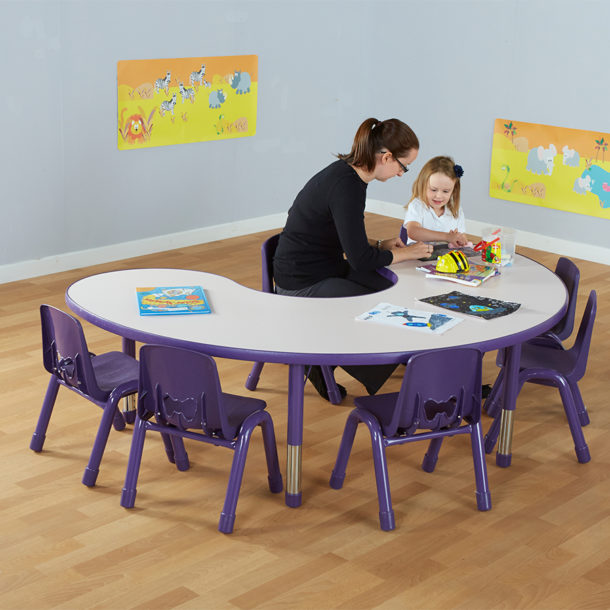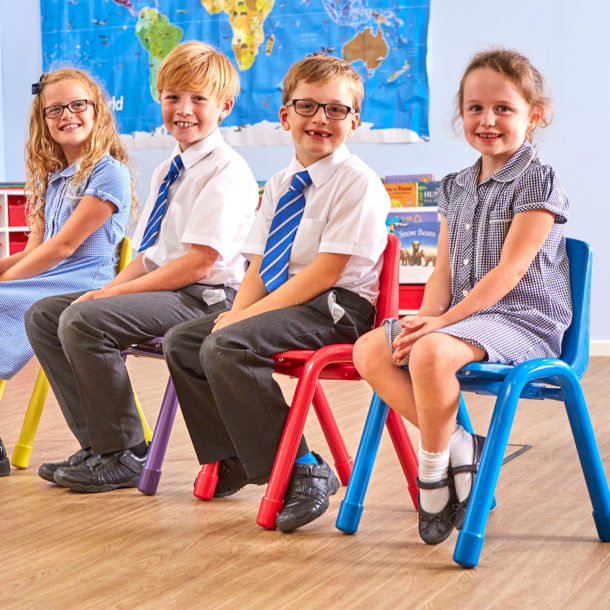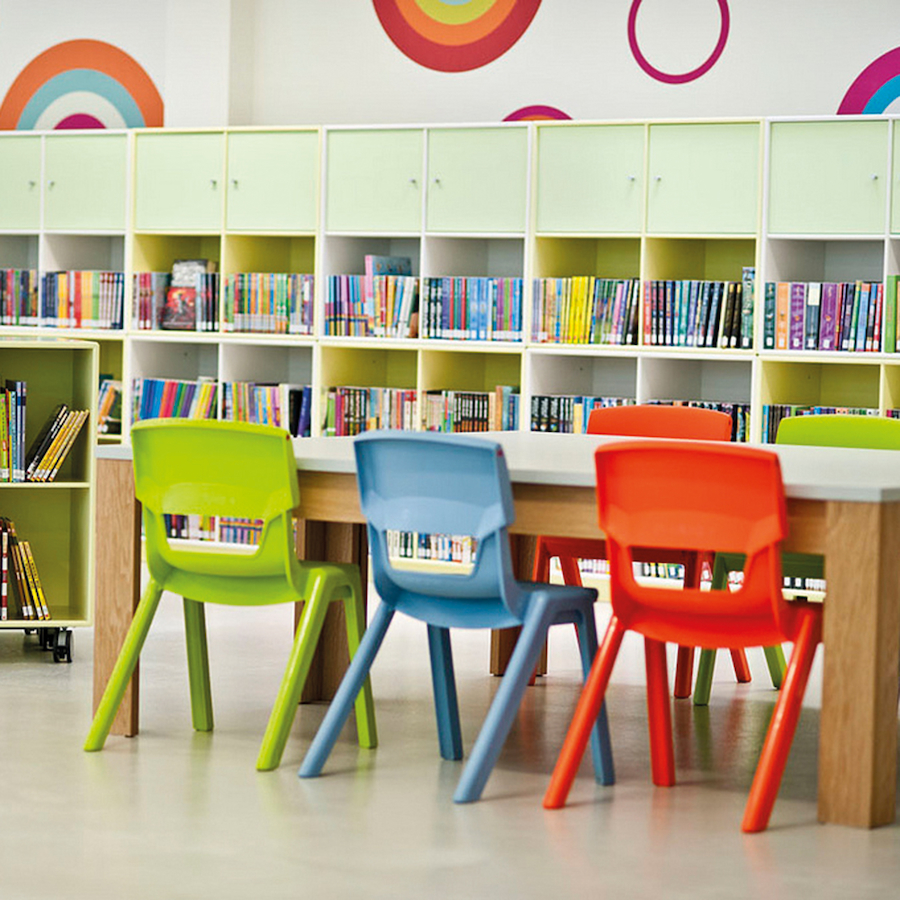Working for extended periods of time whilst using poorly fitting children’s tables and chairs can be, at the very least, uncomfortable (which could affect concentration) or, at an extreme, bad for long-term well-being by causing musculoskeletal disorders. In particular, pupils who are taller or smaller than average are more likely to be affected. Through carrying out research on the design of school furniture in primary schools, I have observed and recorded children adapting themselves to find more comfortable ways of working, whilst using standard classroom furniture. Often this is achieved by tipping the chair or by perching on the front of the seat. Because tipping and perching can, on occasion, cause pupils to fall off chairs or create trip hazards (by placing chairs in the way of others), these behaviours can be interpreted by teachers as disruptive. Resolving these classroom issues requires an understanding of the motivations behind sitting behaviours, like tipping or perching, and the requirements pupils have of school furniture.
When standing, the human spine forms natural curves, there is even pressure on the soft intervertebral discs and the muscles that support the trunk work evenly to keep the body upright. This is a balanced posture. When sitting, particularly if using poorly fitting furniture, the natural spinal curves can distort causing uneven disc pressure. In addition, the muscles supporting the trunk will have to work unevenly so fatigue can set in leading to discomfort. Chair tipping can be a means of alleviating this discomfort by making the trunk more upright, replicating the natural spinal curvature, and restoring a balanced posture.
Comfortable seated postures not only require the seat to be a good fit for the person using it, but also depend on the support being suitable for the task they are required to do. A child who is perching on the front edge of their seat is often simply getting into a comfortable position to be able to get on with the task in hand. The first key point to remember is that pupils need to be able to see and to reach their work in comfort. This is particularly important if pupils are sharing resources. If a reading book is too far away to be seen it can be a challenge to share.
Getting the size of classroom furniture right is addressed, in part, by providing pupils with furniture that complies with the British Standard BS1729. These products have colour-coded feet to ensure tables and chairs are an appropriate match for each other. However, as stated earlier, one furniture size will not fit all of the children using one classroom space.
Issues arise when the chair is too high for a child to place their feet flat on the floor, causing the backs of their legs to become compressed against the seat. This restricts blood flow in the legs and can cause discomfort. At the other end of the spectrum a tall child may have to slouch to be able to see their work, causing discomfort in the back or neck.
It is important to remember that although any awkward posture will cause discomfort, there is no definitive correct way of sitting. If held over time, any static posture can cause muscle fatigue and discomfort. Therefore, allowing pupils to move over time is the second key point to consider. Movement enables oxygen to circulate and eases muscle tension; it is good for spinal health and can aid concentration. A common phrase amongst ergonomists is: “your best posture is your next one”. I have observed children moving through many seemingly unconventional postures whilst being totally engaged in their work. Research indicates that pupils who are able to choose where to work in a classroom are no less focussed than those working in more conventional classrooms[2].
Below are points to consider that could improve a classroom environment as a place for learning in comfort, as well as maintaining/sustaining pupils’ well-being. The furniture adaptations may not be appropriate for every school or classroom so, in addition, there are points for lesson planning that could also be beneficial.
Suggested furniture adaptations:
- Space permitting two, or even three, different sizes of tables and chairs in a classroom would suit a wider variety of pupil sizes.
- Footrests could be used to relieve back-of-the-leg pressure for smaller pupils.
- One or two standing workstations would provide an alternative to tables and chairs and would offer a different way of working; they could occupy less floor space.
Points to bear in mind when planning and setting out resources for lessons:
- Make sure pupils can see and reach the work in front of them without adopting awkward postures.
- Movement is good – think about the task and the time frame – allow time for stretching and changing postures.
- Make sure that furniture does not get in the way of children sharing resources effectively.
In an ideal world each child would have a place to work that fitted his or her personal requirements perfectly. However a behavioural expectation, such as the way in which pupils ought to sit in the classroom, could have as much impact on their comfort and well-being as providing appropriately sized furniture. In short: it is as much about expectations of pupils’ (seated) behaviour as it is about the diverse furniture requirements.
Pupils perching on and tipping chairs.
With thanks to Dr Jackie Lightfoot for writing this post. Jackie is a furniture designer and researcher with a particular interest in historical, social, cultural and design aspects of primary school furniture. Her work focuses on end-user needs and she draws on anatomical knowledge gained through being a qualified yoga teacher.
[1] Parcells, C., Stommel, M., and Hubbard, R. (1999) Mismatch of classroom furniture and student body dimensions: Empirical Findings and Health Implications, Journal of Adolescent Health, 24:4, pp.265-273.
[2] Cardon, G., De Clercq, D., De Bourdeaudhuij, I. and Breithecker, D. (2004) Sitting habits in elementary schoolchildren: a traditional versus a “Moving school”, Patient Education and Counselling, 54, pp.133-142.







